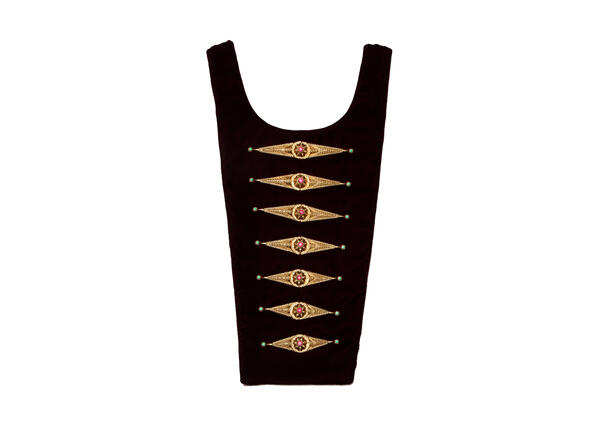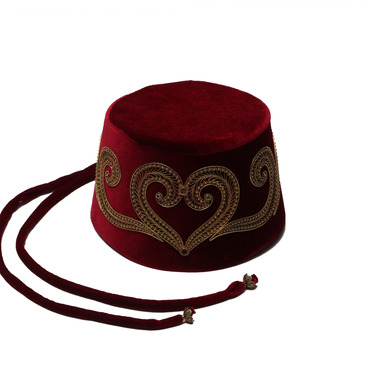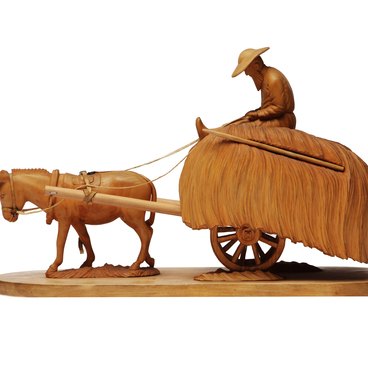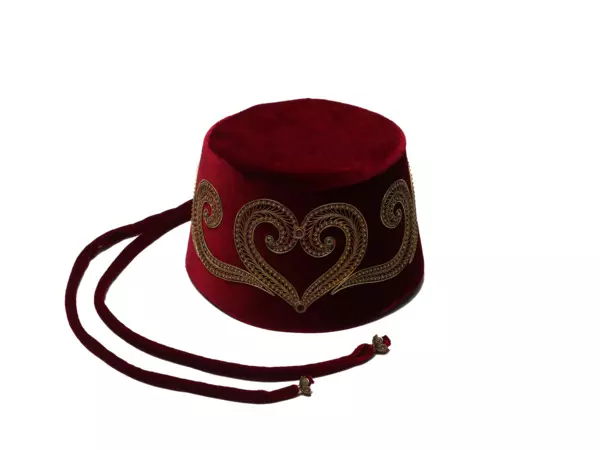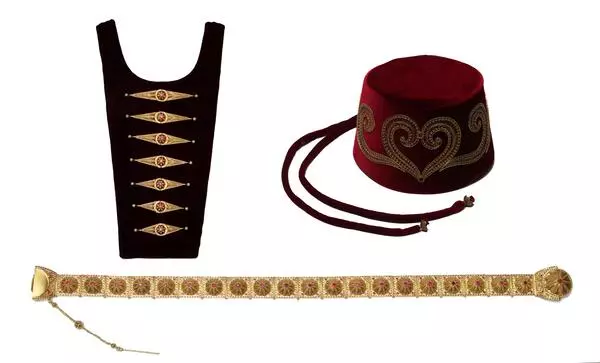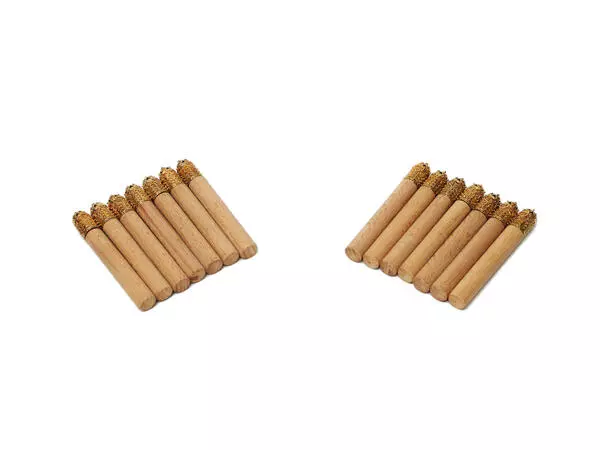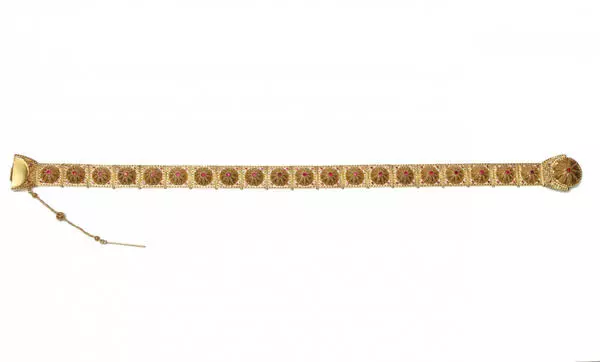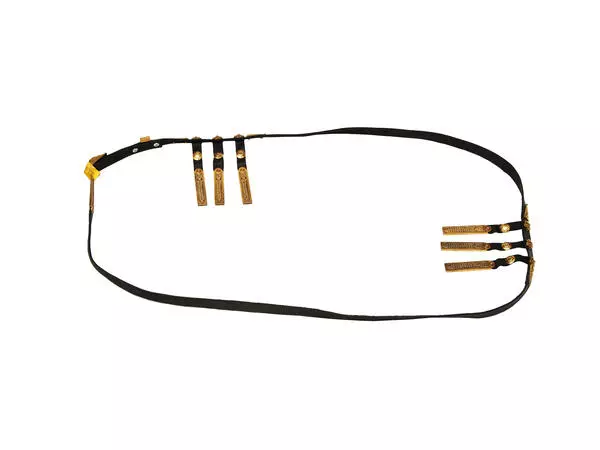The women’s breastplate with plates-fasteners is an element of the Ingush traditional festive women’s costume. It is called “dato”.
Since the ancient times, the fasteners had different forms, were decorated with precious stones or colored glass, engravings or filigree were added to them. They also had various lengths so that they fit the neckline of the upper dress — “chokha”. Usually, there were 12-13 symmetrical plate-fasteners on the breastplate from the neck to the waist.
This breastplate was made by famous jeweler Bekhan Dakhkilgov. To create such a perfectly smooth piece of jewelry, the master prepared a lot of wax models of future plate-fasteners, casting them in a special mold. He soldered the wax fasteners onto one rod — it is called a jewelry “Christmas tree” because the soldered onto it wax ornaments look like tree branches. He filled the “Christmas tree” with a special molding mass and fired it at a high temperature. During the firing, the mass hardened, and the wax flowed out — thus gaps were formed, into which the artist then poured the molten metal.
In the Ingush culture, there is a special concept of “eh-ezdel.” It means a set of ethical rules that every person has to follow. The costume plays a huge role in it: the ability to dress appropriately has always been considered one of the indicators of good manners and intelligence.
Traditionally, the Ingush have a special dress for each festive occasion. All types of clothing had their terms: everyday clothes were called “tsaga lelayu koch”, clothes for receiving a guest — “khyasha-da voage duvhar”, for funerary or birth rituals -"vennacha-vannacha duvhar.’ The festive costumes “yodacha-yoagacha duvhar” were especially carefully decorated.
Women’s outfits were multi-layered. Over the undershirt, they wore a dress with a standing collar decorated with embroidery, lace, or braids. Above it was a swing dress ‘chokha’ made of silk, brocade, rep or velvet. At the chest level, the ‘dato’ breastplate was attached to the first dress — it was placed so that the decoration was visible in the chokha neckline. The dress also had a patterned belt made of the same materials as the dato.
According to archaeological research, there were other types of women’s jewelry: silver, gold, and copper earrings and temple pendants; gold, silver, and copper rings, brooches for “kurhars” (headdresses), bell buttons, figured pendants, bronze patches, rings, and signet-rings with colored glass inserts.
Since the ancient times, the fasteners had different forms, were decorated with precious stones or colored glass, engravings or filigree were added to them. They also had various lengths so that they fit the neckline of the upper dress — “chokha”. Usually, there were 12-13 symmetrical plate-fasteners on the breastplate from the neck to the waist.
This breastplate was made by famous jeweler Bekhan Dakhkilgov. To create such a perfectly smooth piece of jewelry, the master prepared a lot of wax models of future plate-fasteners, casting them in a special mold. He soldered the wax fasteners onto one rod — it is called a jewelry “Christmas tree” because the soldered onto it wax ornaments look like tree branches. He filled the “Christmas tree” with a special molding mass and fired it at a high temperature. During the firing, the mass hardened, and the wax flowed out — thus gaps were formed, into which the artist then poured the molten metal.
In the Ingush culture, there is a special concept of “eh-ezdel.” It means a set of ethical rules that every person has to follow. The costume plays a huge role in it: the ability to dress appropriately has always been considered one of the indicators of good manners and intelligence.
Traditionally, the Ingush have a special dress for each festive occasion. All types of clothing had their terms: everyday clothes were called “tsaga lelayu koch”, clothes for receiving a guest — “khyasha-da voage duvhar”, for funerary or birth rituals -"vennacha-vannacha duvhar.’ The festive costumes “yodacha-yoagacha duvhar” were especially carefully decorated.
Women’s outfits were multi-layered. Over the undershirt, they wore a dress with a standing collar decorated with embroidery, lace, or braids. Above it was a swing dress ‘chokha’ made of silk, brocade, rep or velvet. At the chest level, the ‘dato’ breastplate was attached to the first dress — it was placed so that the decoration was visible in the chokha neckline. The dress also had a patterned belt made of the same materials as the dato.
According to archaeological research, there were other types of women’s jewelry: silver, gold, and copper earrings and temple pendants; gold, silver, and copper rings, brooches for “kurhars” (headdresses), bell buttons, figured pendants, bronze patches, rings, and signet-rings with colored glass inserts.

